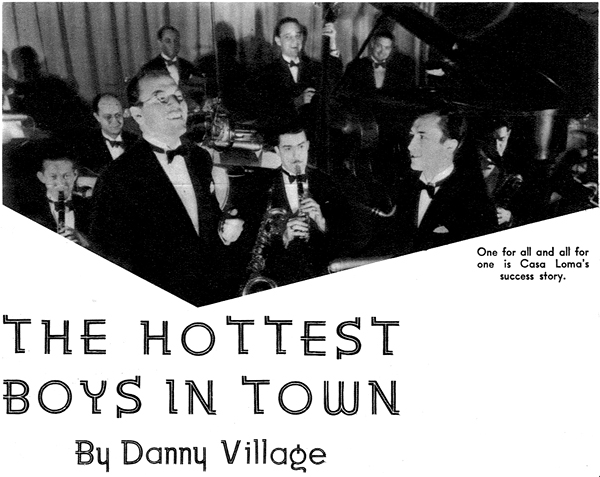Here are 10 things you should know Mary Pickford, born 131 years ago today. She was a true Hollywood pioneer with a list of career accomplishments that has rarely been equaled.
Tag: Toronto
10 Things You Should Know About Berton Churchill
Here are 10 things you should know about Berton Churchill, born 146 years ago today. Though he spent just a decade in Hollywood, he enjoyed a remarkably prolific career over that span.
Snapshot in Prose: The Casa Loma Orchestra
We’ve been aware of the Casa Loma Orchestra for nearly as long as we’ve been fans of the music of the 1930s and ’40s—which is to say, a long time. And we were aware that this entertaining outfit eventually came to be known as Glen Gray and the Casa Loma Orchestra.
But we never knew what inspired the change. Was Glen Grey brought in to replace a former leader of the band, a baton waver who preferred not to be cited by name?
Well, as we learn from this week’s Snapshot in Prose, a 1934 profile of the band, the answer to that question is: no.
Actually, violinist Hank Biagini fronted the band onstage for the first few years of its existence, and for a while, the baton was handed off to violinist Mel Jenssen.
Finally, in 1937, Gray was convinced to lead the band, and he would eventually come to control the very name “Casa Loma Orchestra.”
The Casa Loma Orchestra, which was formed in 1927, lasted till 1963 (quite a run for a dance band), though they stopped touring in 1950, limiting themselves to recordings only, and from the late ’30s on, Gray’s name was included in the band’s name.
But in the early days of the group, before he became the orchestra’s leader and conductor, Gray was voted the band’s president. A swinging dance orchestra that had a president (and a vice president and a secretary)? That’s right, and if you’ll read on, you’ll learn how that came about.
And if you read all the way to the end, you’ll have the chance to give a listen to a couple of our favorite Casa Loma recordings.

 HE hottest boys in town are members of that rootin’, tootin’ outfit of blue-blowers called the Casa Loma orchestra. How they got their start made band history.
HE hottest boys in town are members of that rootin’, tootin’ outfit of blue-blowers called the Casa Loma orchestra. How they got their start made band history.